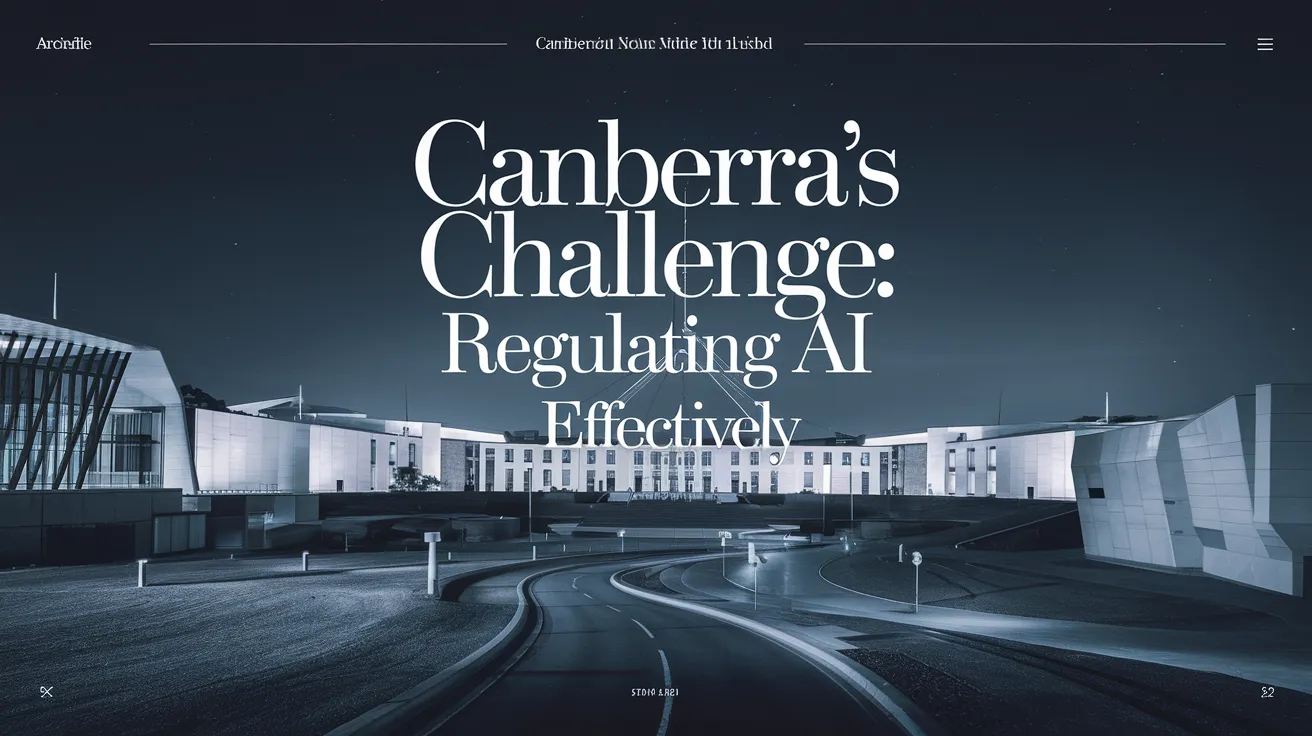Canberra’s Challenge: Regulating AI Effectively

As the Australian government considers another round of discussions regarding how to engage with artificial intelligence (AI), it is clear that action must soon replace discussions. The urgency for decisions around regulating this rapidly evolving technology is becoming more pronounced.
Balancing Interests in AI Regulation
Currently, the government finds itself at the crossroads of varying interests: business groups eager for productivity gains, unions concerned about job security, and tech companies seeking favorable regulations. Ordinary Australians are caught in the middle, weighing the immense benefits of AI against its potential social and economic risks.
In the aftermath of Jim Chalmers’ economic reform summit, questions remain about the Albanese government’s stance on whether overarching new legislation is necessary for AI regulation. Industry Minister Tim Ayres is supervising the development of a national AI capability plan, expected to be completed by year-end. This includes conducting a “gap analysis” on existing policies regarding health, privacy, copyright, and online safety.
Need for Prompt Decision-Making
As discussions progress, opinions within the Labor Party remain diverse. While there is significant agreement on the need for action, there is no consensus on the specific approach to take—be it relying on existing frameworks or establishing a new AI act. The sentiment among many Labor MPs is clear: there is a desire to capitalize on the moment and ensure Australia does not fall behind in AI development.
Drawing parallels to the government’s responses to other fast-evolving technologies, some Labor insiders view prior instances, such as the regulations concerning under-16s on social media, as a roadmap for timely and effective AI governance.
Challenges in Regulating AI
AI presents a complex set of challenges that permeate nearly every industry, necessitating a response from various sectors in the Australian job market. This includes white-collar workers, tradespeople, and public employees, all of whom will experience the transformative effects of AI technology.
Before the roundtable discussions, some criticism was leveled at the prior industry minister, Ed Husic, for launching numerous reviews without leading to a clear path forward. As tech companies race to develop new AI models, the government remains encumbered by a lengthy review process.
Proposed Actions and Future Considerations
Ayres intends to capitalize on the emerging AI boom by establishing a framework focusing on three main pillars: harnessing economic opportunities, sharing the technological benefits, and implementing safety checks. However, the timeline for decisions about developing new legislation remains uncertain.
Key issues persist, such as addressing copyright concerns for AI models and navigating the competing interests of data mining exemptions versus compensation for creative industries. While unions advocate for workforce protections, the government appears to be walking a tightrope between promoting productivity through AI and safeguarding employee rights.
The future of AI regulation in Australia poses a multifaceted challenge for the current administration. Striking a balance between economic opportunity and workforce protection will likely define Labor’s legacy in this domain for years to come. The ongoing deliberation process may ultimately reveal whether a proactive approach or the constant reviewing of AI implications proves to be the prudent choice.